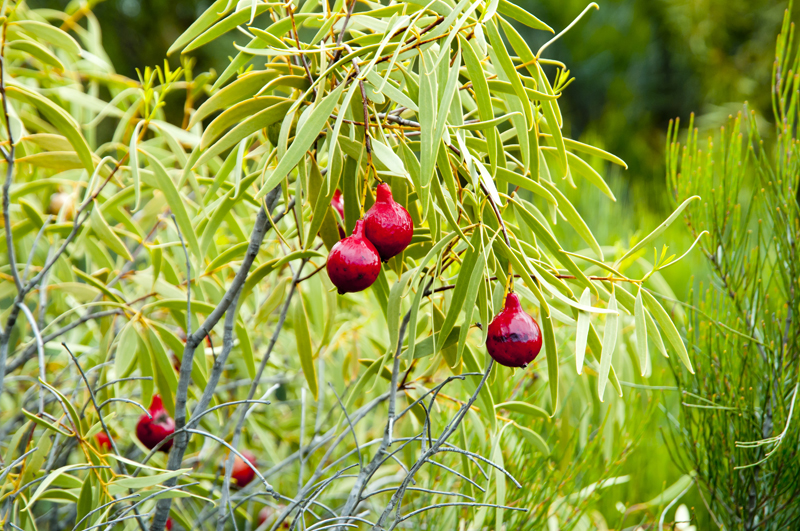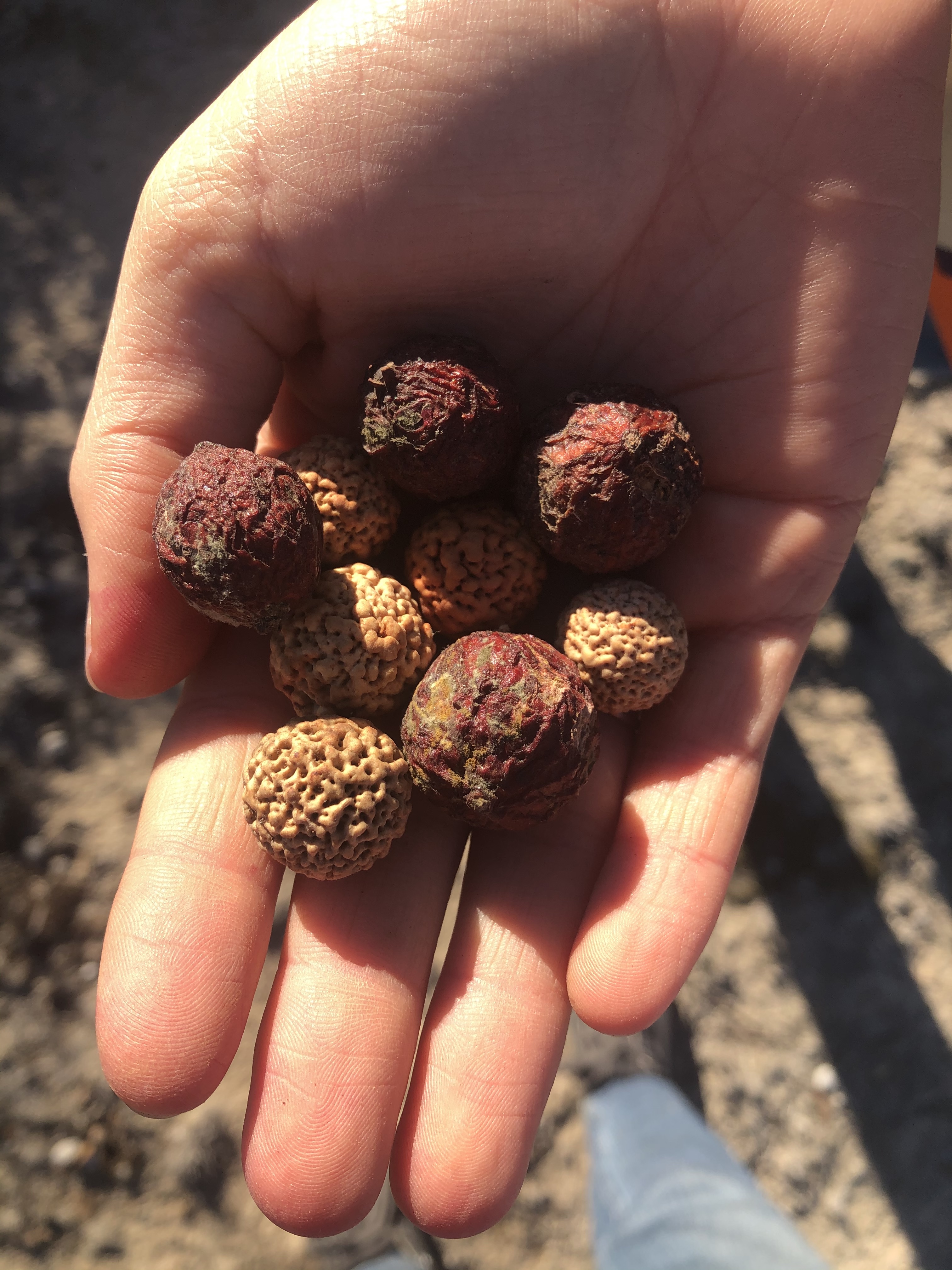1. Nature Notes: Lesson 1 - Spring in the Wheatbelt
Do you know what a bungarra is? It is the local indigenous name for sand monitors, a large lizard also known as a goanna. Australia is home to 14% of the world's reptilian population and sand monitors live over most of Australia, except the most southern areas.
Perhaps draw or paint a bungarra, dragon lizard, gecko
or bobtail lizard in your Nature Notebook.
Barbara describes the quandongs at this time of year as being ripe within the sentence “the quandongs gleamed red with their ripeness”. This is what ripe quandongs look like:

The Nyoongar people plant quandongs during Makuru (the season within June – July, which proceeds the section Barbara is documenting here). This is dry country so few of the plants survive, but to increase their chances they are planted close to acacia and sandalwood saplings to provide some protection. This is what the seeds look like for planting:

This is a glimpse of what the landscape looks like in this area of Western Australia:

Photos used with permission of Lyndsay Humphreys, a friend of mine who helps these efforts to plant quandongs with the Noonygar people.
Perhaps draw or paint a quandong
in your Nature Notebook.
